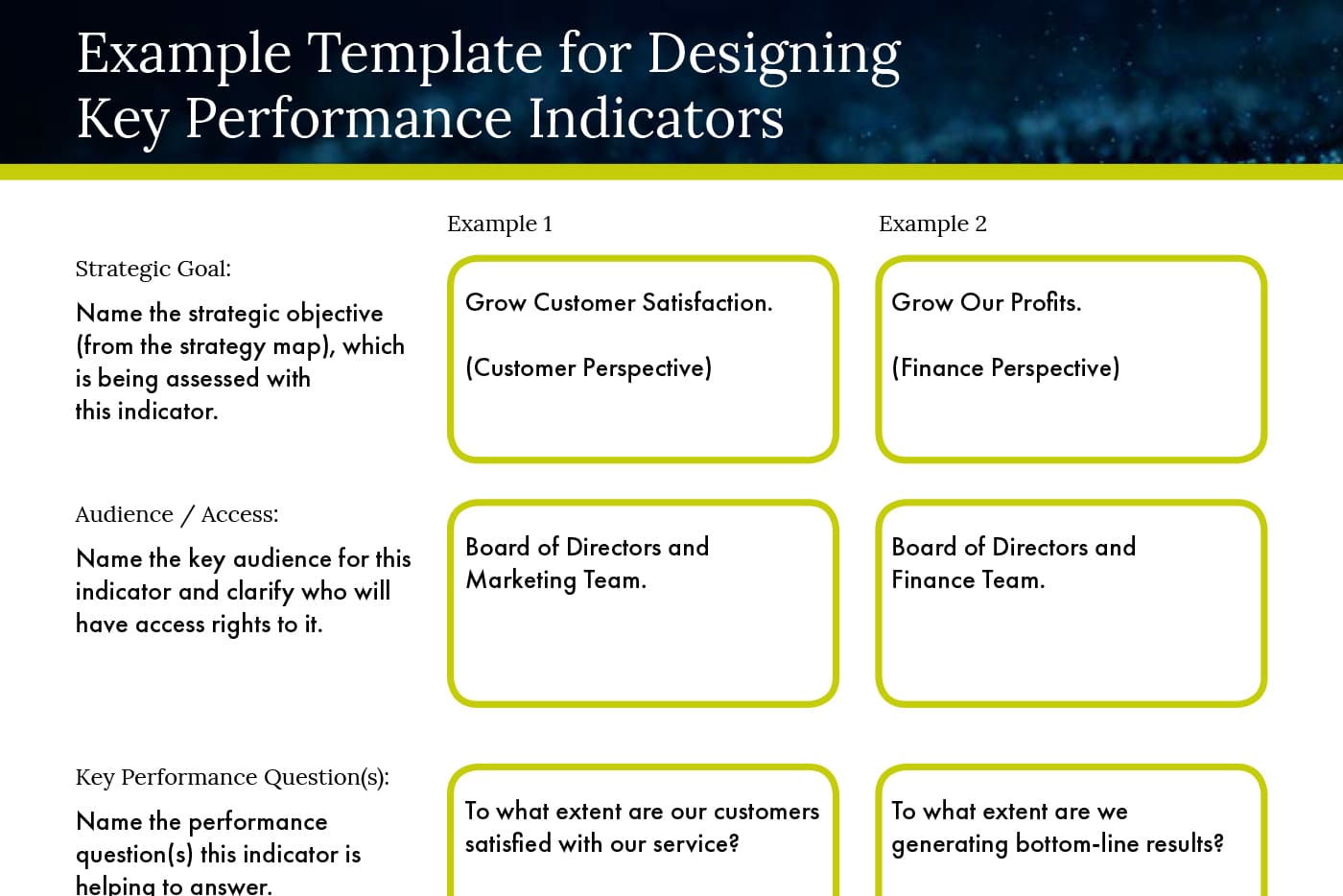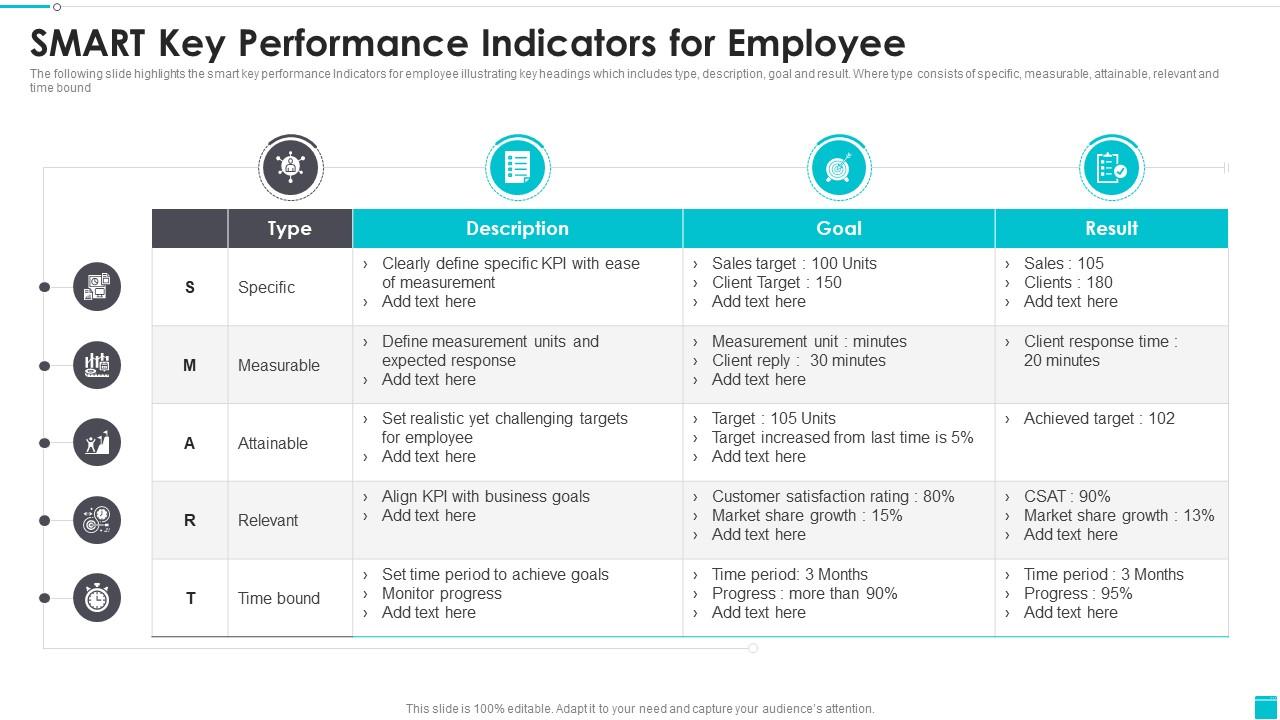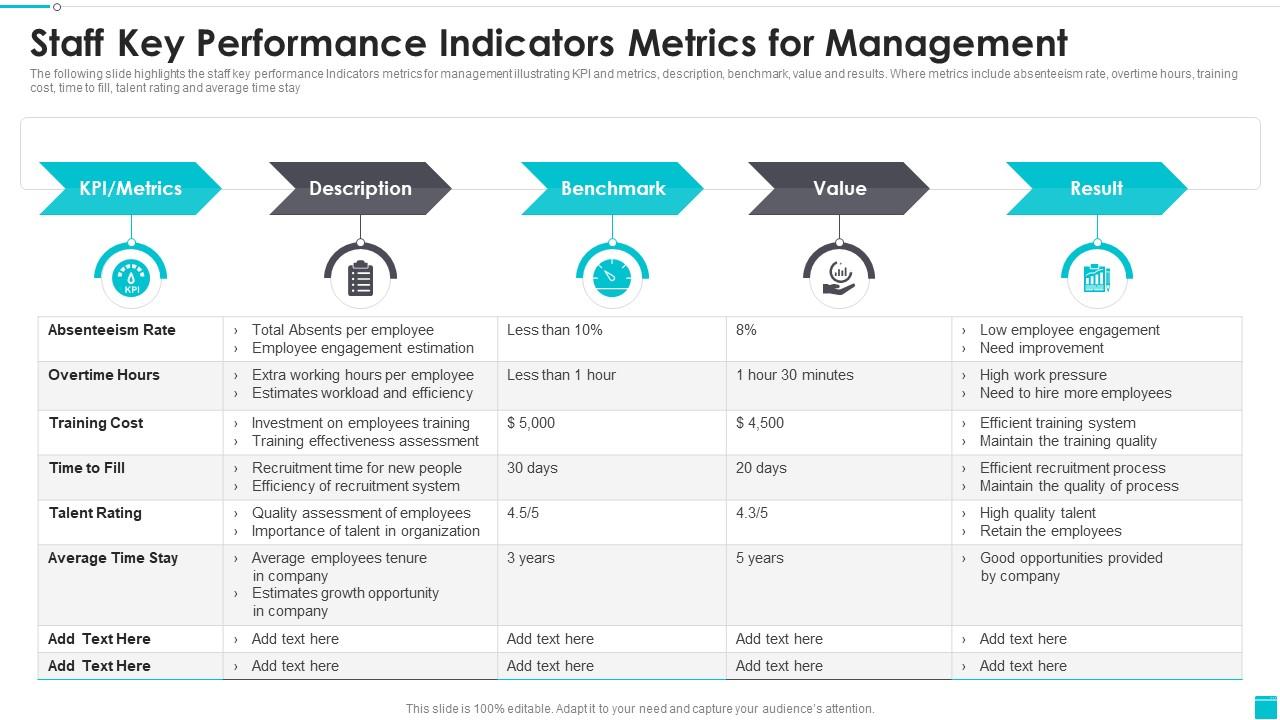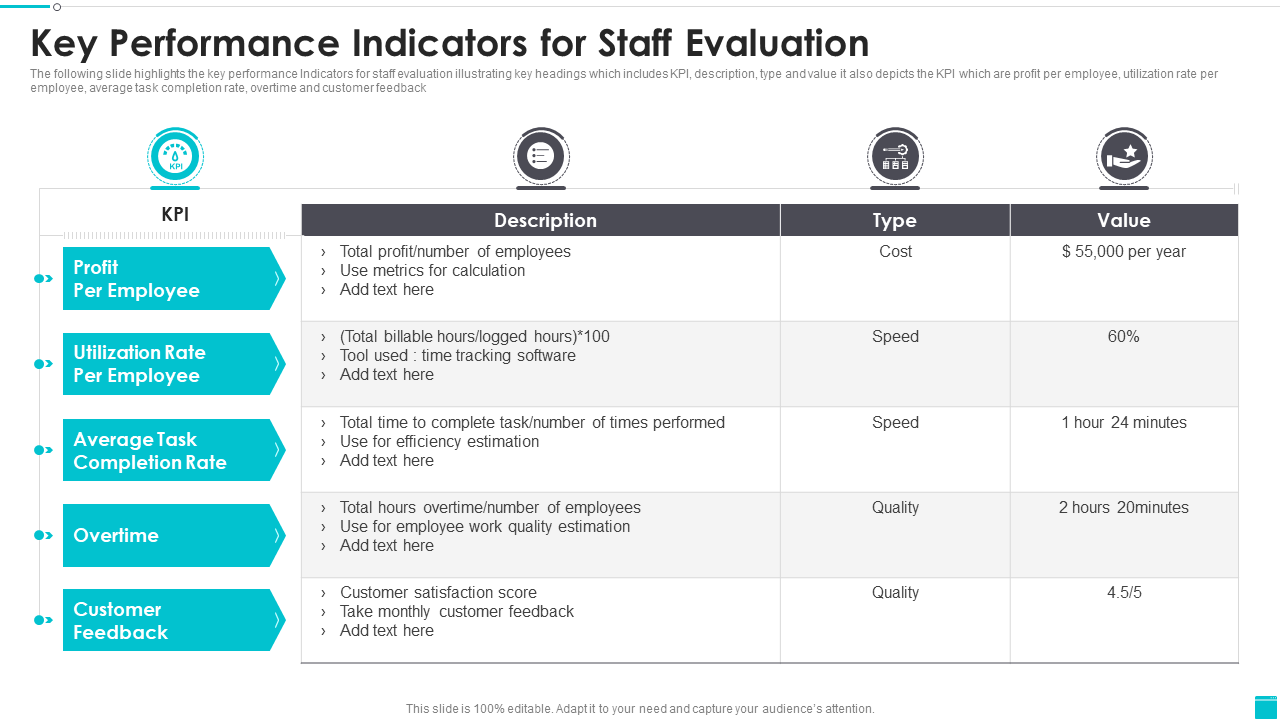Key Performance Indicators Employee Evaluation

The ongoing debate surrounding the effectiveness and fairness of Key Performance Indicators (KPIs) in employee evaluations continues to evolve, prompting organizations to re-evaluate their performance management strategies. The conversation, fueled by both academic research and practical workplace experiences, centers on whether KPIs accurately reflect individual contributions and foster a productive work environment.
This article examines the complexities of using KPIs in employee evaluations, exploring their potential benefits and drawbacks, and highlighting the need for a nuanced and adaptable approach. The core question is: how can organizations effectively leverage KPIs to drive performance without creating unintended consequences such as employee disengagement or a narrow focus on easily measurable metrics?
The Rise of KPIs in Performance Management
KPIs have become a cornerstone of modern performance management systems. They are designed to provide quantifiable measures of an employee’s success in relation to specific job responsibilities and organizational goals.
These metrics can range from sales targets and project completion rates to customer satisfaction scores and error rates.
The appeal of KPIs lies in their perceived objectivity and ability to track progress over time, offering a seemingly data-driven approach to evaluating employee performance.
Potential Benefits of KPI-Driven Evaluations
When implemented effectively, KPIs can offer several benefits. They provide clarity and focus, aligning individual efforts with organizational objectives.
Clear performance expectations, communicated through KPIs, help employees understand what is expected of them and how their contributions are measured.
KPIs can also facilitate data-driven feedback, enabling managers to identify areas where employees excel and where they may need additional support.
The Dark Side: Limitations and Criticisms
However, the exclusive reliance on KPIs in employee evaluations is not without its critics. One major concern is that KPIs often fail to capture the full scope of an employee's contribution, particularly in roles that involve creativity, collaboration, or problem-solving.
Focusing solely on quantifiable metrics can lead to a narrow and short-sighted approach, incentivizing employees to prioritize easily measurable tasks over those that may be more strategically important.
This can also stifle innovation and discourage employees from taking risks, fearing that their efforts will not be adequately recognized if they do not directly translate into improved KPI scores.
The Human Element: Bias and Fairness
The subjective interpretation of KPIs can also introduce bias into the evaluation process.
While KPIs are intended to be objective measures, managers may interpret the data differently, potentially leading to unfair or inconsistent evaluations across different teams or individuals.
This is particularly relevant in situations where external factors, such as market conditions or unforeseen circumstances, significantly impact an employee's ability to meet their KPI targets.
Finding the Balance: A Holistic Approach
Many organizations are now advocating for a more holistic approach to employee evaluations, one that combines KPIs with qualitative assessments and feedback.
This approach recognizes the importance of quantitative data while also acknowledging the value of subjective observations and contextual factors.
Regular performance check-ins, 360-degree feedback, and opportunities for self-reflection can provide a more comprehensive understanding of an employee's performance and potential.
Expert Opinion and Best Practices
According to Dr. Anna Brown, a leading expert in performance management at the Society for Human Resource Management (SHRM), “The key is to use KPIs as a tool, not a weapon. They should be used to guide development and support improvement, not to punish or demotivate employees."
Dr. Brown recommends involving employees in the KPI-setting process to ensure that the metrics are relevant, achievable, and aligned with their individual goals.
She also emphasizes the importance of providing regular feedback and coaching to help employees improve their performance and achieve their KPI targets.
Impact on the Workforce and the Future of Evaluations
The ongoing debate surrounding KPIs and employee evaluations has significant implications for the workforce. Employees who feel that their performance is being unfairly or inadequately measured are more likely to become disengaged, stressed, and less productive.
This can lead to higher turnover rates, decreased morale, and a negative impact on organizational performance.
As organizations continue to evolve and adapt to the changing demands of the modern workplace, the future of employee evaluations will likely involve a more nuanced and personalized approach, one that recognizes the importance of both quantitative and qualitative data, and that prioritizes employee development and well-being.


















